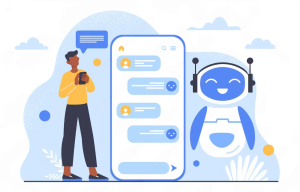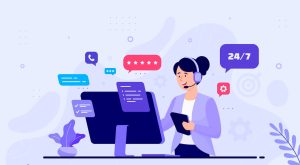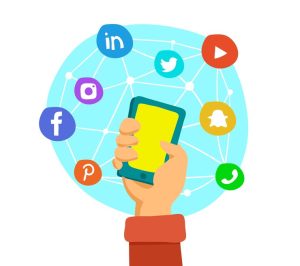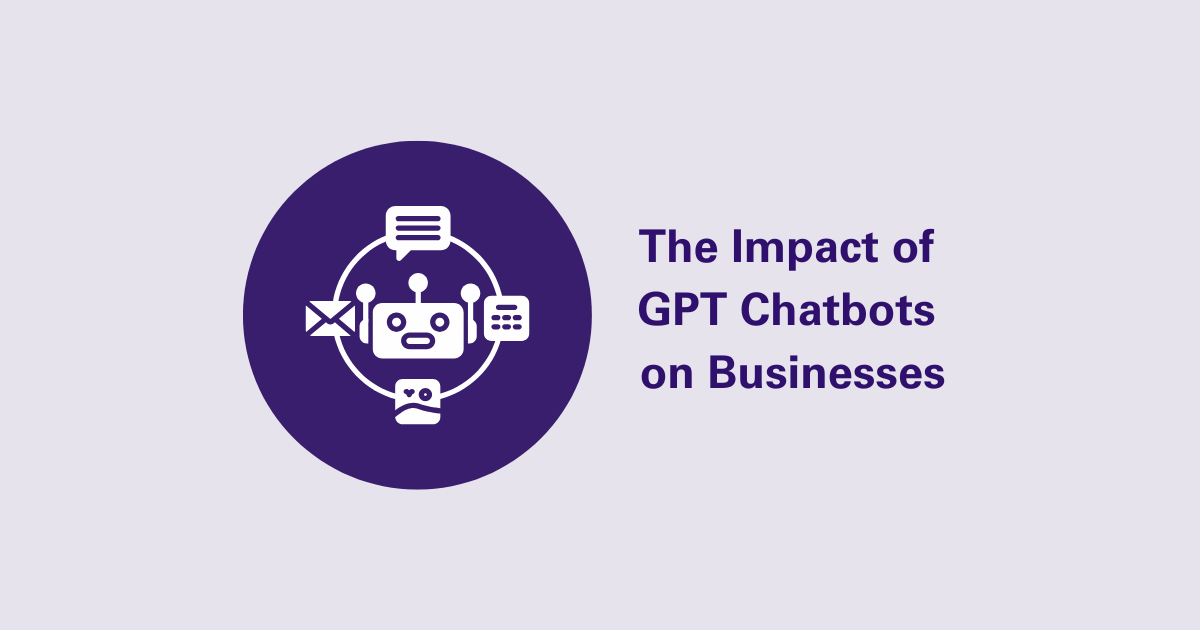GPT chatbots offer effective solutions for modern businesses looking to improve customer interactions and streamline operations. These advanced AI-powered tools automate tasks, engage users, and provide 24/7 support, all customized to meet the specific needs of your organization.
Businesses face challenges like high costs, slow responses, and inconsistent customer service. GPT chatbots address these issues by delivering quick, personalized, and accurate interactions that improve efficiency and boost user engagement.
In this post, we’ll look at how GPT chatbots can help your business improve customer service, cut expenses, and encourage meaningful user engagement.
What Are GPT Chatbots?
GPT chatbots are intelligent conversational agents that utilize Generative Pre-trained Transformers (GPT), an advanced machine learning model. These chatbots use Natural Language Processing (NLP) to engage in real conversations with users by understanding and responding to their messages. They excel at answering inquiries, providing 24-hour support to customers, and managing complex interactions, which makes them essential for improving customer engagement and automating communication.

Key Features for Adopting GPT Chatbots
GPT chatbots include important features that make them highly productive and helpful to organizations. Their enhanced capabilities increase customer engagement, simplify processes, and provide customizable solutions for different requirements.
- Human-like interactions: GPT chatbots can engage people in interactions that are natural and humanlike. They are designed to understand context and reply in a way that makes interactions more relatable and effective.
- Versatility: These chatbots are highly adaptable and can handle a wide range of activities, from answering simple questions to handling complex discussions. Their versatility makes them appropriate for various industries and services.
- Continuous learning: GPT chatbots can learn and improve with time. They become more effective as they engage with people and collect more data, in order to improve their replies and overall performance.
- Natural Language Processing (NLP): The application of NLP enables GPT chatbots to understand and generate text in a manner similar to human language. This ability helps in clear, consistent communication, making interactions better and user-friendly.
- Triggered-Based Actions: GPT chatbots can automatically respond to user inputs or behaviours, like sending reminders, operating transactions, or responding to inquiries. This enables quick and efficient interactions, streamlining customer engagement.
- Real-Time Adaptability: These chatbots adapt their responses in real time based on user behaviour or conversation changes. This makes sure that communication is accurate and relevant, even in dynamic or unexpected circumstances.
- Context Awareness: By reviewing previous encounters and conversation flow, GPT chatbots can understand user intent and respond contextually. This makes interactions better and natural.
How GPT Chatbots Work: Understanding the AI Model Behind the Conversation
A conversational AI that understands, generates, and responds to human conversation with powerful natural language processing (NLP) models. Here is a breakdown of their main functionality:
- Training and preprocessing
GPT models are trained on large datasets of books, articles, and webpages, allowing them to understand grammar, vocabulary, and context.
The model uses unsupervised learning to detect patterns and relationships in data, allowing it to provide a broad spectrum of replies.
- Understanding Language
To better understand its structure and meaning, the chatbot breaks down user input into smaller pieces (tokens), like words or subwords.
Unlike rule-based systems, GPT chatbots consider the full discussion, resulting in more meaningful and understandable responses.
- Generating responses
GPT chatbots forecast the next word based on input and context, leading to the most likely and relevant response.
They track long-term dependencies in the conversation, ensuring consistency throughout.
- Fine-tuning and adaptation.
GPT chatbots can be customized with business-specific information to tackle queries particular to an industry.
They improve over time by responding to user preferences and comments.
- Natural Language Generation (NLG)
GPT chatbots use Natural Language Generation (NLG) to provide personalized, real-time responses.
Their human-like engagement patterns make communication simpler and interesting.
- Handling ambiguity and complex queries
GPT chatbots can manage unclear questions by requesting clarification or making intelligent predictions.
They manage multi-turn conversations and maintain consistency throughout interactions.
Impact of GPT Chatbots on Your Businesses
GPT chatbots are changing business interactions by providing seamless communication, improving efficiency and user experiences. Here’s how they can provide measurable value for your business:
-
Enhanced Customer Service
- They provide 24/7 support to handle client inquiries quickly.
- Reduce response times to improve customer satisfaction and loyalty.
- Streamline workflows by managing high volumes of queries, allowing agents for more complex tasks.

-
Increased Productivity
- Automate routine tasks like appointment scheduling, order tracking, and data entry to save time.
- Enable seamless integration with existing systems like CRMs, resulting in smoother workflows.
- Empower teams with real-time data insights, allowing them to make faster and more informed decisions.
-
Scalability and Flexibility
- Effortlessly scale customer service operations according to changing demands.
- Customize chatbot capabilities to meet particular business goals and industry requirements.
- Respond rapidly to market changes by providing updates and new features in real time.
-
Personalized Customer Experiences
- Use artificial intelligence to analyze customer behaviour and provide personalized recommendations or solutions.
- Deliver replies based on previous interactions for a seamless customer experience.
- Build stronger connections by engaging in dynamic, one-on-one encounters that seem human.
-
Multilingual Support
- Communicate effectively with customers all over the world, breaking down language limitations.
- Provide localized support to build trust and grow in foreign markets.
- Translate and answer requests quickly while keeping uniform quality in all languages.
-
Omnichannel Integration
- GPT chatbots engage across multiple platforms, including websites, social media, and messaging apps.
- They maintain consistency in communication, resulting in an unified customer experience.
- Allows businesses to easily engage with their customers on their preferred channels.

Why You Need a GPT Chatbot?
GPT chatbots provide many advantages to organizations, particularly in terms of increasing customer interaction. They provide quick, personalized responses, leading to more valuable interactions. With the ability to understand context and address complex queries, these chatbots ensure that customers receive correct and quick responses, which improves overall satisfaction.
Another major benefit of GPT chatbots is their ability to support different languages, which is critical for firms with international customers. Offering customer support in the customer’s native language increases engagement and loyalty. GPT chatbots also reduce operational expenses by automating regular processes, freeing up workers for more strategic activities. Many firms experience significant cost reductions when utilizing AI to handle a large number of customer inquiries.
GPT chatbots also increase productivity by streamlining procedures like initial integration which saves time on manual processes. Businesses who integrate these chatbots into their regular operations can improve customer service, increase efficiency, and save money, making them an essential tool for long-term success.
Potential Challenges of Implementing a GPT Chatbot in Your Business
Implementing a GPT chatbot has many benefits, but it also creates certain challenges that must be addressed carefully. One of the most major problems is integration with existing systems. Setting up a GPT chatbot involves complete planning and technical skills for a seamless connection with existing systems, preventing disruptions and maintaining smooth performance.
Additionally, businesses must consider bias management, as GPT chatbots can reflect biases in their training data. Regular monitoring and updates are essential to make sure replies are accurate and impartial.
Another challenge is ongoing maintenance, which is required to keep the chatbot relevant as customer needs change. Continuous updates will improve performance and help the chatbot to align with business goals.
Data privacy is also a serious concern. Managing compliance with legislation like GDPR is critical for protecting customer information and building confidence.
Finally, managing user expectations is important. Although GPT chatbots can perform a variety of tasks, they have certain limitations. Informing employees about their abilities helps to avoid misunderstandings and promotes a great customer experience.
By overcoming these problems, businesses can successfully adopt GPT chatbots that deliver great value while reducing risks.
Considerations Before Implementing GPT Chatbots
Before integrating a GPT chatbot into your business, there are several important factors to consider. These considerations will help ensure the chatbot aligns with your goals and provides the expected value.
One key factor is defining business objectives. Clearly outlining your business goals and identifying areas where automation can provide the most benefit, like customer service or lead generation, is essential. This will guide the selection of the right chatbot solution.
Another important consideration is choosing the right platform. Select a platform that meets your business requirements which offers scalability and seamless integration with your existing systems to provide smooth operations.
Additionally, prioritizing data privacy and security is crucial. Verify that the platform complies with privacy regulations and follows best practices to protect customer information which helps to build trust and prevent data breaches.
Training your team is also important. Proper training ensures that the chatbot is managed and used effectively, allowing your team to maximize its potential.
Lastly, monitoring performance and gathering feedback is necessary. Continuously monitoring the chatbot’s performance and gathering user feedback allows for constant improvements, so that it consistently delivers maximum value.
By taking these factors into consideration, businesses can effectively develop a GPT chatbot that improves efficiency while reducing risks.
Conclusion
GPT chatbots provide significant advantages to businesses, like improved customer support, operational efficiency, and income. They provide 24/7 assistance, automate draining processes, and customize conversations to build customer connections. GPT chatbots help cut operating expenses and increase efficiency by handling a large number of questions.
However, integrating a GPT chatbot has several problems, including complex setup, data privacy concerns, and the need for continuous maintenance. To address these challenges, firms must assess their requirements, choose the appropriate platform, and ensure seamless integration and employee training.
When implemented effectively, GPT chatbots can increase customer engagement and streamline operations, helping businesses stay competitive in today’s digitally oriented environment. Continuous monitoring and optimization are critical for increasing the chatbot’s value and maintaining its long-term success.
By addressing these challenges, businesses can fully use GPT chatbots to achieve their goals and deliver exceptional experiences.
FAQ’s
- How do GPT chatbots work?
GPT chatbots process user input by breaking it into smaller units (tokens), understanding context, and generating responses based on probability and relevance. They are trained on large datasets and continuously adapt to user feedback to enhance performance.
- What industries can benefit from GPT chatbots?
GPT chatbots are versatile and can be adapted for industries such as e-commerce, healthcare, banking, real estate, and education. They can assist with tasks like appointment scheduling, order tracking, patient support, and account management.
- Why do businesses need GPT chatbots?
GPT chatbots enhance customer engagement with quick, personalized responses, support multiple languages, reduce operational costs, and streamline processes. They help businesses stay competitive by improving customer satisfaction and efficiency.
- What are the main challenges in implementing GPT chatbots?
The main challenges include setup complexity, ensuring seamless integration with existing systems, data privacy concerns, and the need for ongoing maintenance to keep the chatbot updated and relevant.
- Are GPT chatbots capable of handling multiple languages?
Yes, GPT chatbots can support multiple languages, making them ideal for businesses with a global customer base. This feature helps bridge communication gaps and ensures better customer engagement across different regions.


Leave a Reply